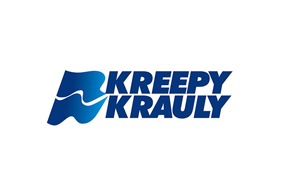Getting new customers is expensive. Keeping them? This is where the work really gets done.
Hear me out – you’ve (hopefully) invested time, money and energy persuading someone to buy from you once already. They know who you are.
They have felt your product or service. So why do countless businesses act like customer acquisition is the only game in town?
Here’s a fact check: It costs five to seven times more to acquire a new customer than retain an existing one.
And yet the majority of businesses in Perth continue to throw their precious marketing dollars down the drain into a bottomless pit of chasing after new clients, while existing paying customers go quietly unloved and drift away to your competitors.
Let’s discuss how to keep customers in ways that actually make the needle move for your business.
Why Customer Retention Marketing Matters More Than You Think
Customer retention strategies aren’t just about being nice to people who’ve already bought from you. It’s about building something bigger.
Your existing customers are 50% more likely to try new products and spend 31% more than new customers. They’re easier to sell to. They trust you already. And if you treat them right, they become walking, talking advertisements for your business.
But here’s what most people miss – retention isn’t a one-off campaign you run in December to boost year-end sales. It’s a mindset that needs to shape how you do business every single day.
Start With What You’ve Already Got
We’ll start by getting something out of the way before we dive into all these awesome customer loyalty marketing strategies, shall we? You cannot keep customers if you don’t know who they are, what they need and what they expect.
And this is why it’s so important to have a strong system in place. Your website analytics, email lists and customer data are more than numbers in a dashboard somewhere. They are stories of actual people who have decided to do business with you.
At Slinky we assist Perth based businesses by putting in place the right kind of tracking and analytics to give you actual useful information. Not vanity metrics you can show off in a boardsheet. Actual intelligence for who’s buying, what they’re buying and why they keep coming back for more.
Email Marketing: The Workhorse Nobody Talks About
Social media is cool these days. Who doesn’t want to go viral on Instagram or outsmart the algorithm on TikTok?
But do you know what it takes to succeed with customer retention marketing? Email.
I know, I know. Email sounds dull next to flash social campaigns. But consider this – when a person hands you an email address, that person is literally inviting you to their inbox. That’s valuable real estate you don’t want to squander.
The key is to not bore your audience to death with generic newsletters that sound like they were collectively written by a committee. Your emails should feel like they’re coming from a real person who actually gives a damn about helping them.
Send stuff that matters:
- Information on items that they have already purchased
- Tips for deriving more value from what they already have
- Offers exclusively for them to make them feel special
- Content that solves problems that they’re most likely struggling with
Our email marketing is not your average spam-filled email blasts. Ones that actually establish identity, not just clog our inboxes with more noise.
If you’re looking to get under the hood with crafting email campaigns that convert, read our tried-and-true tactics for email marketing success.
Make Your Website Work Harder for Retention
And your website probably isn’t terrible at turning new visitors into paying customers. But after that first buy?
Most websites are the one-night stand good for the first conversion, but you’re never going to get married on the first date.
Here’s why it keeps customers coming back:
- Noncreepy personalization: Show them things related to items they have purchased before. Acknowledge their purchase history. Value them in the way that is not overbearingly invasive.
- Manage accounts simply: If your users need a PHD to update their preference or see what products they bought from you, they won’t. Simple, clean, functional. That’s what wins.
- Post-sale value: boast you a blog, resource centre, or knowledge base that helps individuals? When your site turns into the place to get industry news, you stay top-of-mind in between purchases for customers.
Web design for Slinky isn’t all about making everything look pretty. You’re really building experiences that help people feel they want to be here.
Social Media Marketing for Retention (Not Just Acquisition)
Everyone uses social media to find new customers. Fair enough.
But what about using it to keep the ones you already have engaged?
Your social channels should be places where existing customers feel like they’re part of something. A community. A movement. Or at the very least, a business that actually gives a damn about them.
Post content that serves your current customers first. Answer their questions publicly. Share their success stories. Create insider moments that make them feel valued.
Our social media marketing services help businesses build communities, not just follower counts. Because a thousand engaged customers are worth more than ten thousand random followers who couldn’t care less about what you’re selling.
The Power of Staying Visible
This is something most businesses fail to realize: you’re out of sight, out of mind.
If they don’t see or hear from you regularly, even happy customers will slip away. Not because they’re disloyal. Just because they’re busy and life happens.
This is also how SEO becomes something of a retention tool that many people obviously never think about. You want your content to appear when a current customer searches for the answers to their problems. Not your competitors’.
Ongoing blog content, useful resources, and high search visibility? You’re simply always top-of-mind. And guess who they will think of first when they do need what you have to offer?
Our SEO services aren’t only about ranking for phrases that new traffic is searching for. They’re not so much about finding new readers as they are about making sure that everyone who already knows and loves you sees your brand every day in one place or another.
Customer Loyalty Marketing Strategies That Don’t Suck
Let’s address the elephant in the room – loyalty programmes.
Most of them are rubbish. They’re complicated, unrewarding, and feel like homework nobody signed up for.
If you’re going to create a customer loyalty programme, make it dead simple. Points that actually convert to meaningful rewards. Benefits that kick in quickly, not after someone’s spent their life savings with you. Exclusive access to things people actually want.
Better yet, consider loyalty strategies that don’t involve points at all:
- Priority customer service for repeat buyers
- Early access to new products
- Special pricing tiers based on purchase history
- Free shipping thresholds that make sense
- Birthday or anniversary perks that feel personal
The goal isn’t to create a complex system that requires a team of people to manage. It’s to make customers feel genuinely appreciated for choosing you again and again.
Don’t Ignore the Unhappy Ones
Here’s an inconvenient truth when it comes to #retention hackery: once in awhile, people get angry with you. Product issues. Shipping delays. Miscommunication. It happens.
It’s how you work through those moments that makes someone stay or go.
Responding quickly matters. Owning mistakes matters more. And actually fixing problems? That matters most of all.
Many businesses view complaints as pesky things. Smart businesses see even these as chances to convert disappointed customers into raving fans. After all nothing fosters brand loyalty like a company that made things right when they went wrong.
Use Data Without Being Weird About It
You have information on your customers. Use it. But use it in ways that are helpful to them, not just you.
If someone has purchased a pair of running shoes from you once every six months, then an email reminder around that time frame isn’t stalker status level. It’s helpful.
If someone visits your site but does not make a purchase, it could be logical to send them a soft touch with additional information. What about emailing them every day for a month? That’s the way to get into spam folders.
The difference between helpful and obnoxious is smaller than you might think. Err on the side of being helpful, not insistent.
Create Content That Serves Your Existing Audience
Content marketing is a lot more than just getting new visitors to your site from Google. It is one of the best possible ways to stay in live contact with your present customers.
Write about things that would matter to your current customers. Answer questions they’re asking. Solve problems they’re facing. Show them how they can do with it that which you didn’t sell to them before.
When your customers can frequently see your content, it means they are always a little bit closer to your brand. They think of you as experts. And then, for as much as you’re the clearly the guy with the next thing that they need in his wheelhouse up their sleeve again.
Make Buying Again Stupid Easy
Remove friction wherever possible.
Save payment information (securely, obviously). Remember shipping addresses. Offer subscription options for products people buy repeatedly. Let people reorder past purchases with one click.
Every extra step in the buying process is another chance for someone to change their mind or get distracted. Smooth that path out.
Measure What Actually Matters
You can’t improve what you don’t measure. But you also must measure the right things.
Forget vanity metrics. Track things like:
- Customer lifetime value
- Repeat purchase rate
- Time between purchases
- Customer churn rate
- Net promoter score
These numbers are all about informing you whether your retention efforts are working. They’re a map of where problems are. And they offer you standards from which to better yourself.
At Slinky we focus on the analytics and reporting that matter to your bottom-line. Not pretty charts that don’t lead to increased business.
Wondering how we turn numbers into advice? Here’s what we are doing with analytics and data.
The Reality Check
Customer retention marketing isn’t sexy. It’s not the type of thing that makes for a viral campaign or landing a huge new client.
But it is the difference between companies growing sustainably and those that are constantly in a scramble to replace customers who fled.
Selling someone once is the easy part. The true challenge is turning that transaction into a relationship that will benefit both parties for years to come.
If you are expending more energy acquiring customers and not giving any attention to your existing ones, then you might as well be trying to fill a bucket with holes at the bottom. Fix the holes first. Then you can worry about adding more water.
How to Retain Customers: Start Now
Do not wait until you observe customer numbers plummeting to begin thinking about retention. By that time, it’s about damage control rather than relationship building.
Choose one from the list. Just one. Implement it properly. Measure the results. Then add another.
Perhaps you begin with better email campaigns. Or actually getting that customer portal onto your website. Or starting a small, straightforward loyalty scheme which actually rewards people properly.
The particular trick is less important than adopting the attitude shift. Your current customers are entitled to just as much attention as potential new ones. Probably more.
Slinky have been growing businesses in Perth and Australia wide for over 20 years. Not through flashy strategies that work for a while. By sustainable methods that multiply incessantly. Our digital marketing, SEO skills and web design exist for one reason – to help you create and build a business that lasts.
If you’re ready to stop haemorrhaging customers and start keeping customers, then call us on (08) 6102 8944. We’ll help you determine what retention strategies are right for your situation. No cookie-cutter solutions. Just common-sense tips from those who’ve been at this since long before social media was even a thing.



























